Swift And Massive Renovations At Industry City Now Attracting The General Public
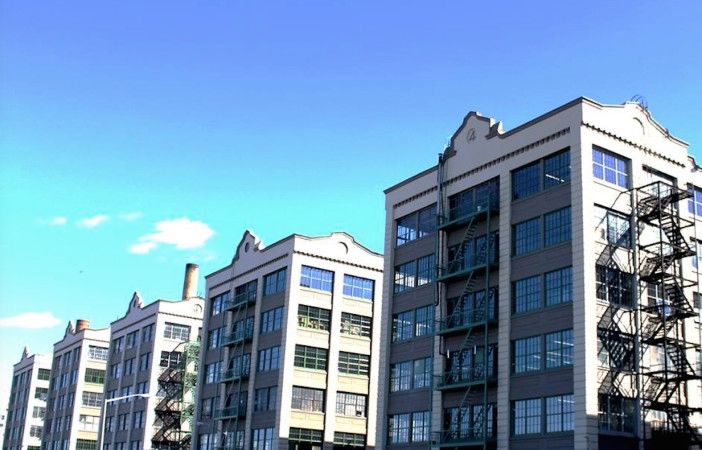
No matter what synonym we choose to describe the massive size of Industry City, it will fall short. The first piece of advice we have for your Industry City visit is to wear comfortable shoes.
The Brooklyn Flea and Smorgasburg relocated to Industry City on Saturday, October 17 and will remain until March 27, 2016. The importance of the relocation cannot be underestimated, as it will bring a tremendous amount of foot traffic to the complex and greatly increase the familiarity of the area to the general public.
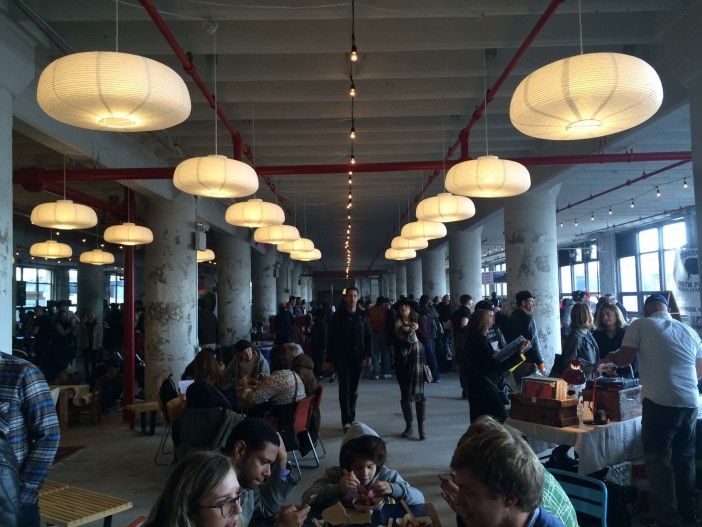
Industry City is a 16-building, 6-million-square-foot complex that includes work spaces for fashion designers, food, photography, manufacturing, media, and technology companies. Even though the Brooklyn Flea and Smorgasburg use 50,000 square feet of space on one building floor (the entrance for the weekend event is at 241 37th Street), it’d be easy to spend time in the complex without even knowing it’s there.
We toured the buildings hours after the weekend debut of Brooklyn Flea/Smorgasburg, and it was rather packed. The layout of the enormous floor has the Flea taking up the center space of the room, while Smorgasburg rings the windows. The two events seem more like one, as flea shoppers and foodies mesh together. Seating is available to eat items purchased at Smorgasburg.

If you come down to Brooklyn Flea/Smorgasburg and have the time to spare, we recommend taking a long walk through the complex. Think of it as some sort of industrial, urban hike — and be sure to allow yourself time to get lost here and there. It’s also an opportunity to truly get a sense of how much active development is going on, as well as the history of the space.
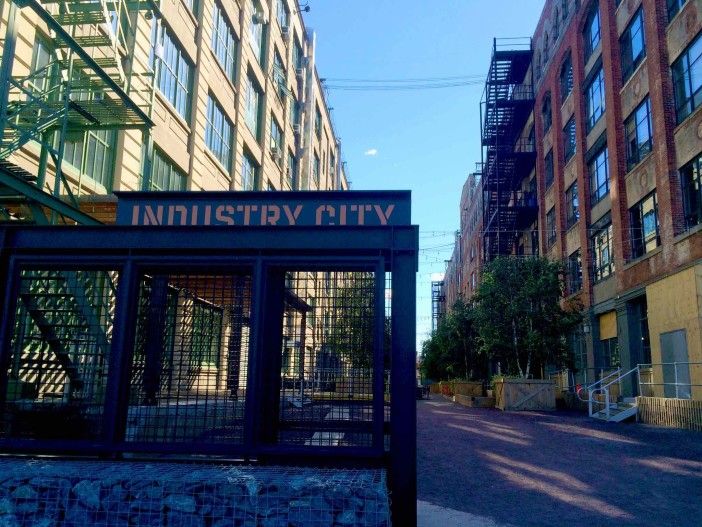
The history of Industry City follows the trajectory of the importing and exporting of manufactured goods, and seaport industry in the U.S. Originally called Bush Terminal after its founder Irving Bush, the complex was built in 1905. By the late 1930s, Bush Terminal hosted almost 25,000 workers.
The decline of industrial growth led to the loss of jobs, and by the 1960s, Bush Terminal had become dilapidated. In addition, the loss of the long-defunct 5th Avenue El made transportation to the area more difficult. Bush Terminal was renamed to Industry City in the 1980s after Industry City Associates took it over.
Industry City certainly didn’t close or become a site of complete desolation. It was home to garment manufacturing, warehouses, and a variety of artisans.
It’s hard to believe, but the $1 billion redevelopment by the partnership consisting of Jamestown, Belvedere Capital, and Angelo, Gordon & Co., along with Cammeby’s International and FBE Limited, is only two years old.
Industry City CEO Andrew Kimball refers to the desire to create an “innovation economy” at the complex, which includes art, design, film, TV, fashion, tech, and food.
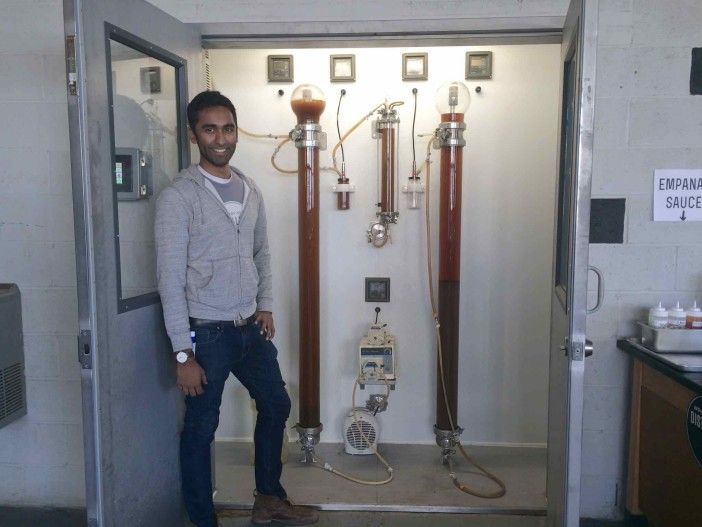
And there are already successes. One example is the vodka-maker Industry City Distillery. Regularly featured as a business to watch, the distillery has several successful-selling vodkas and a tasting room with jaw-dropping views of both the Manhattan skyline and New York Harbor. As described by Fast Company, the company created a “bioreactor system that would fit inside a closet one might call small even by the cramped standards of New York City.”
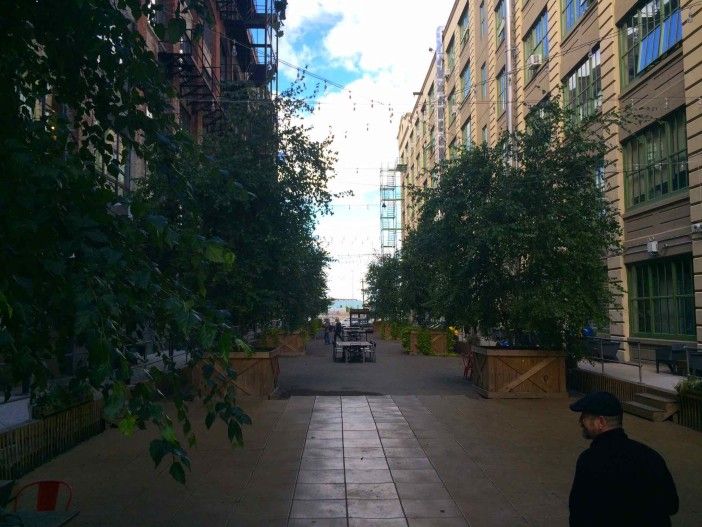
Kimball has also pushed the importance of jobs and education as a core of the future of Industry City. As of recent, a collaboration among Industry City, local politicians, educational programs, and local non-profits will yield a new jobs center that plans to provide job training as well as education and assistance to the community in entrepreneurship. The announced time frame for Innovation Lab to open is by the end of 2015.
The complex also has studio space rented by artists, who were featured in an Artist Open Studios weekend that ran in conjunction with the first weekend of Brooklyn Flea/Smorgasburg as well as Gowanus Open Studios.
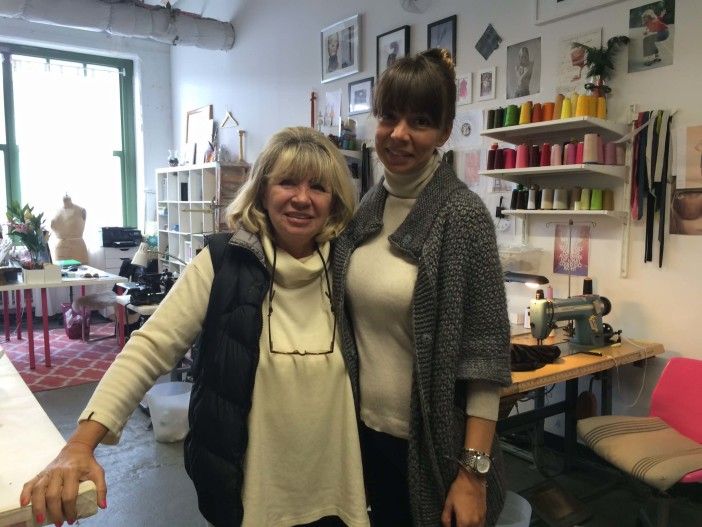
However in March 2014, the New York Times wrote an article about the displacement of artists, including four dozen who lost the leases on their studios at Industry City.
When we spoke with Jenny Dubnau of the Artists Studio Affordability Project (ASAP) at the recent Gowanus artist protest, she said that her work with the group came “directly from the loss of artists’ space at Industry City.” Dubnau has been working on the Small Business Survival Act, which would assist artists in lease renewal arbitration as well as allowing them to receive longer-term leases.
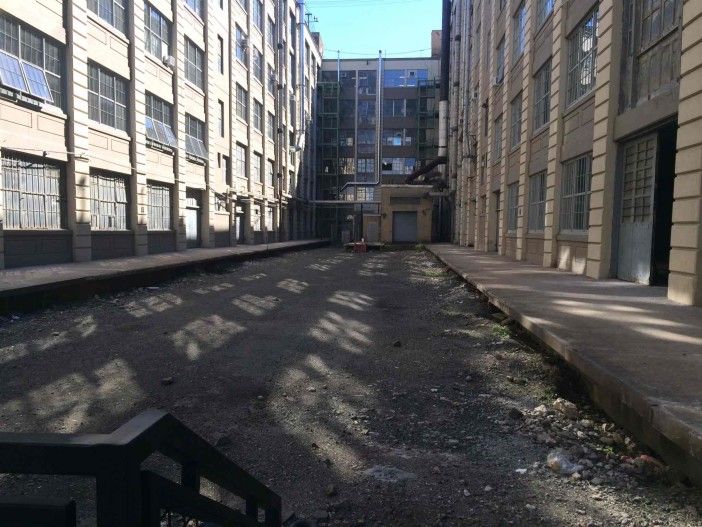
As you walk around the complex, you’ll see a mix of completely renovated buildings as well as areas that have not yet been touched.
But without a doubt, Industry City is developing fast. The Brooklyn Nets will be opening their new practice facility here in 2016. The developers announced plans in March 2015 to build a hotel within the property.
It’s easy to look at plans and envision impressive architecture, further economic development, and a very different Sunset Park. What will hopefully be part of that development is economic opportunity for small businesses, space for artists, and continued education for young innovators. Because if that happens, Industry City has the capability to be a development project that the entire world can view as a model for the 21st century.
About traveling to Industry City: If you’re visiting Industry City, keep in mind that parking fills up quickly. (An increase of parking lot space is another development in the works.) Parking is available for a special rate of $5, which will allow you to stay all day. In the meantime, we recommend public transportation. The D,N, and R lines stop at the 36th Street station, which is one (long) block away.
There are a series of entrances to the building housing Brooklyn Flea/Smorgasburg. You can plug 241 37th Street into your mapping app to guide you to one of the main entrances. The other is directly across the street from the Costco parking lot next door.




